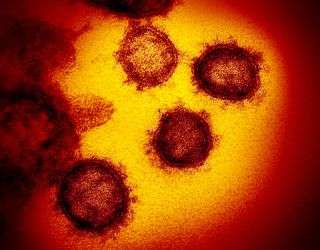
This is a transmission electron microscope image showing the new coronavirus emerging from the surface of human cells.
The new coronavirus SARS-CoV-2, which has now infected nearly 76,000 people, spreads mostly through respiratory droplets and contact with infected patients. But new research suggests that it can also spread through feces.
There are currently more cases of COVID-19 (the disease caused by the virus SARS-CoV-2) than would be expected if the virus were spreading only through respiratory droplets and contact with infected patients, according to a report published on Feb. 15 by the Chinese Center for Disease Control and Prevention (China CDC).
Previous tests have found that the coronavirus can be present in feces, but it was unclear if it would be viable enough to transmit to another person, according to a previous Live Science report. So, a group of researchers analyzed stool samples from patients infected with COVID-19.
They isolated the coronavirus from one patient who had severe pneumonia and examined the virus under an electron microscope. They found that the coronavirus was viable. “This means that stool samples may contaminate hands, food, water, etc.,” the China CDC wrote in the report. People who use the bathroom and then don’t wash their hands could spread the virus to others, for instance.
All about COVID-19

—See live updates on the new coronavirus
—How deadly is COVID-19?
—How does the new coronavirus compare with flu?
—Why are children ‘missing’ from coronavirus outbreak?
“This virus has many routes of transmission, which can partially explain its strong transmission and fast transmission speed,” the China CDC wrote. In order to avoid transmitting the coronavirus through eating or drinking something contaminated with feces, the China CDC recommends frequently washing your hands and disinfecting surfaces, maintaining personal hygiene, avoiding consumption of raw food, drinking boiled water and disinfecting hospital environments.
Another study, published Feb. 17 in the journal Emerging Microbes and Infections, found that the virus was present in blood and anal swabs taken from patients infected with COVID-19.
Sourse: www.livescience.com





